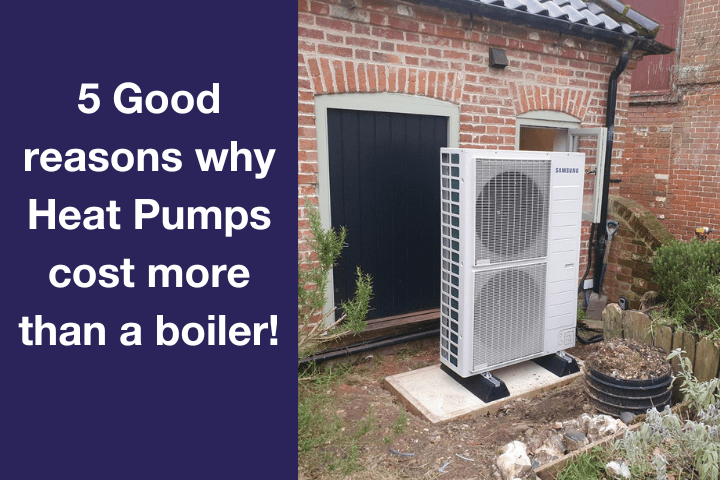Village Hall Week – 8 Great Reasons to Go Green

This week it’s Village Hall’s Week. And the theme this year is ‘Go Green’. We couldn’t agree more. Village halls, parish halls, community centres, Community Hubs and community halls have a critical role in helping the UK transition to a cleaner, greener future.
In this blog we’ll explore why village halls and community centres should embrace going green, the challenges they face, the benefits renewables and low carbon technology can bring, and share some examples of the village halls we have already helped on their green transformation journey.
Table of Contents
Village Halls – An integral part of British history
At Green Building Renewables, we love village halls and community centres. They are great places to see our work installed and to hear the stories of the difference they make.
The history of village and community Halls in England dates back centuries, reflecting the evolving needs and dynamics of both rural and increasingly urban communities.
What’s the origin and history of village halls?
Village halls can be traced to medieval times when communal spaces served as central gathering points for villagers often linked to churches. These spaces were not only places of worship but also venues for meetings, celebrations, and local governance.
As the country evolved, the role of these communal spaces expanded to accommodate changing societal needs. The philanthropic Victorians for example, and the rise of social reform movements led to the establishment of purpose-built village halls, funded by local benefactors or organisations, to provide spaces for education, recreation, and social welfare activities. These halls became vital hubs for community engagement, offering a range of services and activities to support the well-being and cohesion of rural and urban populations.
In the 20th century, village and community halls in England saw even further development, particularly during periods of social change and urbanisation. Working men’s clubs and centres connected to industry and trade were also created in the cities. In the aftermath of World War I and II a renewed focus on community cohesion and rural development prompted initiatives to strengthen local infrastructure and amenities.
Today, village halls (and their urban counterparts) continue to serve as multi-faceted venues for social gatherings, cultural events, education programs, and local governance, playing a crucial role in preserving the identity and resilience of communities.
Village Halls – A meeting point for Green Groups
In recent years we’ve noticed a notable growth in green local community groups utilising village halls as central hubs for their activities. We know because we’ve attended lots of events at such places.
Local green and environment groups are motivated by a shared commitment to environmental sustainability, community resilience, and collective action. The rise of these grassroots initiatives reflects an increasing awareness of the urgent need to address climate change and promote sustainable living practices at the local level.
Village halls as communal spaces play a key role in fostering collaboration, knowledge sharing, and mutual support. They are often accessible and inclusive venues where people can come together to discuss environmental issues, share ideas, and implement practical solutions. Local green groups organise a wide range of activities, including workshops on renewable energy, recycling drives, eco-friendly gardening projects, and sustainable living seminars.
The growth of green community groups in village halls is a positive step and a promising trend towards a greener UK and one we wholeheartedly support. We’re here to help any local green group who wants to find out more information about renewables and low carbon technology. Village Halls Week Go Green initiative is a great idea and one we thoroughly endorse.
What is Village Hall’s week?
Village Hall’s Week is an annual event celebrated in the United Kingdom to recognise and showcase the vital role that village halls play in rural communities. Organised by the charity Action with Communities in Rural England (ACRE),
During Village Hall’s Week, local communities across the UK are encouraged to celebrate their village halls and highlight the diverse range of activities and services they offer.
This year’s theme is Go Green. It will look at how buildings can be made more energy efficient, and how management committees can support sustainable and environmentally friendly behaviours in their community.
It is taking place from 18th-24th March, as many halls as possible have been encouraged to hold their own events, to share their stories and to get inspiration from others.
Villages Halls and Community Halls are great buildings to go green and act as examples to the local community. There are both challenges and benefits that they face when making the decision to go green.
7 Challenges Village Halls face when going green
Village halls face several challenges when it comes to managing energy costs and transitioning to green technology
- Upfront Costs: One of the biggest challenges is often the initial investments required to install renewable energy systems or implementing energy-efficient measures. Village halls often operate on tight budgets, and finding the necessary funds for solar panels, insulation, or energy-efficient appliances can be daunting.
- New technologies bring new challenges: Green technologies such as solar panels and heat pumps are still new technology to many people. Village Halls often rely on old out-of-date inefficient technologies like oil heaters and gas boilers. As village halls look to embrace the new cleaner greener technology they need to ensure that they use installers and technicians who know the technology. If a village hall has a relationship with an existing tradesperson who maintains the hall, they will need to ensure that they are qualified and experienced with the new technology. It is also essential that village hall committees educate hall users on the technology so that they are used and maintained correctly after installation, especially for systems like heat pumps, which operate differently from what people might be used to when controlling heat for a building.
- Regulation hurdles: Navigating regulations and obtaining necessary approvals for renewable energy installations can be time-consuming and bureaucratic. Village halls may encounter restrictions, building regulations, or planning permissions that complicate the process of going green.
- Limited Resources: Many village halls operate with volunteer committees or limited staff resources. Finding the expertise or capacity to research, implement, and manage green energy projects effectively is difficult. Without access to dedicated personnel or technical support, they may struggle to identify viable options and oversee the transition to renewable energy.
- Perceived Risk: Some village halls may perceive renewable energy investments as risky or uncertain, particularly if they lack confidence in the technology’s reliability or long-term performance. Concerns about potential disruptions, maintenance costs, or returns on investment may deter them from pursuing green initiatives.
- Heritage Concerns: For older village halls located in historic buildings or conservation areas, preserving architectural integrity and heritage value while implementing energy-efficient upgrades can present a challenge. Balancing modern sustainability goals with the need to protect and maintain traditional structures requires careful planning and consideration.
- Community Engagement and Support: Engaging the community in green initiatives and garnering support for energy-saving measures can be challenging. Convincing stakeholders of the benefits of going green, addressing concerns, and rallying community involvement may require effective communication strategies and outreach efforts.
8 Benefits of embracing renewables and low carbon technology for Village Halls
We’ve highlighted the common challenges that village halls face when it comes to going green but installing renewable energy and low carbon technology in village halls will bring numerous benefits.
- Cost Savings: Perhaps the most obvious, renewable energy sources such as solar panels or wind turbines can help village halls reduce their energy bills over time. While there might be upfront costs for installation, the long-term savings on energy bills can be substantial.
- Environmental Impact: Going green reduces carbon emissions and reliance on fossil fuels, which helps combat climate change and promotes environmental sustainability. By using renewable energy sources, village halls can significantly decrease their carbon footprint.
- Community Engagement: Implementing green technology can engage the community in sustainability efforts. By leading by example village halls can inspire residents to adopt more sustainable practices in their own lives.
- Resilience and Reliability: Renewable energy sources like solar can be more resilient to disruptions when compared to traditional energy sources. They can provide a reliable source of energy, especially in rural areas where power outages might be more common. If technologies like battery storage is also factored in, then this resilience increases even more..
- Long-Term Investment: Investing in renewable energy and low carbon technology is a long-term investment in the future. It reduces reliance on finite resources and helps future-proof village halls against rising energy costs and regulatory changes. Over the last few years, energy bills have been one of the biggest costs of many village halls.
- Enhanced Reputation: Adopting green technology can enhance the reputation of village halls as responsible and forward-thinking institutions within the community. It can attract positive attention from residents, visitors, and potential funding sources. They can act as a beacon to educate the wider community on the benefits of going green.
- Health Benefits: Renewable energy sources produce fewer pollutants compared to fossil fuels, which can lead to improved air quality and public health benefits for the community. Replacing gas boliers for example eliminates the risk of carbon monoxide poisoning. And improving the energy efficiency of buildings can reduce the risk of things like black mould growing which can negatively affect users health..
- Grant Opportunities: Many local governments and organisations offer grants and incentives for installing renewable energy and low carbon technology. By going green, village halls can access these funding opportunities to offset initial costs.
6 of our favourite Village Hall installations
We’ve installed renewables and low carbon technology in village and community halls all over England, here are five of our favourites from around our offices
Hibaldstow Village Hall, Brigg
Located in North Lincolnshire, Hibaldstow Village Hall’s installation was arranged by a happy residential customer of ours whom we had installed solar for on his home and who was involved in helping to run the hall..
We installed a 7.4kw Solar PV System with 20 x 370w Black Mono Panels. The system also included a 12.3kw FOX ESS Hybrid Energy Cube Battery Storage System consisting of 3 x 4.1 Fox cube batteries.
Secretary, Colin Mawdsley, describes why the Village Hall chose the centre and the lessons they have learnt.
“The hall decided to go solar because our old gas boiler was 20 odd years old and clearly at the end of its life. As a public community building, it didn’t feel right to install a new CO2 producing gas boiler when global warming is a topic that is hard to ignore.
“Working with our local MP and her team we secured a grant from SSE Keadby power station to help the switch to low energy lighting and the purchase of solar power and battery storage.
“We have now been able to install a heating system we can control remotely and efficiently. So far we have also received over £300 in SEG payments for exporting surplus energy.
“The cost of energy crisis still gave the hall serious cost issues over the winter of 2023/24 as electricity prices rose to 42p per kWh. However, fixing a new three year deal on energy as well as educating hall users, we believe has got us through this expensive period.
“For any other halls considering solar energy I would say, “Do it” but be aware you still need to manage usage closely, switch things off promptly, use accurate timing, and in particular educating users. If you do this, you will be fine.”

Hickling Barn Community Centre, Norwich
Built to a traditional Norfolk design Hickling Barn is situated on a seven-acre playing field, close to Hickling Broad in the Norfolk Broads. The new barn opened in January 2012 and boasts more than 5,100 sq ft of indoor recreational space.
We didn’t do the initial solar installation on the centre, however, in 2023 the centre decided it wanted to add a battery storage system to its existing array. We installed and commissioned a battery system, which featured a 3-phase 10kW Foxes AC coupled Inverter and a 21.5kWh Foxes battery system (5x 4.3kWh energy cube batteries).

Lavant Memorial Hall, Chichester
Lavant Memorial Hall is situated in the South Downs National Park just outside Chichester in West Sussex. The hall overlooks one of the prettiest village greens in the county, with picturesque views of the South Downs and the Goodwood Estate.
With electricity being the only connected utility at Lavant Memorial Hall, its committee wanted to reduce its bills and offset the cost of running the facility by investing in Solar PV. Solar Voltaics installed 9 kW all black monocrystalline panels connected to the Hall’s three-phase supply. Lavant Memorial Hall has a second stage plan to use surplus energy generated to heat their hot water for the kitchen and showers using our SolarSaver.

Braunston Village Hall, Northamptonshire
Located in Braunston, Northamptonshire, Braunston Village Hall is a community-run hall located in the village centre. Originally the village school and doctor’s surgery, it is now regularly used by various community groups. Our team from Daventry installed a 14kW Mitsubishi heat pump.

Tang Hall Community Centre, York
The Tang Hall Community Centre is a long-standing community facility located in the Tang Hall area of York, England. It was established in 1992 to address the social and economic challenges faced by the local community at the time. Today, it offers a range of services and activities including health and fitness classes, youth clubs, community events, and volunteer programs.
We installed a 14.8 kW Solar PV System, which we were delighted to see win Best Small Scale Project at the Yorkshire Energy Efficiency Awards last year.
Watch Centre Manager Stephen Collins describe the impact the installation has had on the centre.
Garthorpe Village Hall, Lincolnshire
The hall is in the centre of the village of Garthorpe and Fockerby, on the Isle of Axholme, North Lincolnshire. It is 10 miles from Scunthorpe and 12 miles from Goole. We installed a solar PV & Battery Storage System- 8.1 kW on roof PV system with 8.6 kW battery. Much of the funding for the solar panel system came from the SSE Keadby Wind Farm Fund.

This Village Hall’s week, we encourage all community organisations who manage village and community hubs to consider going green. Transitioning to renewable energy sources like solar and low carbon technology like heat pumps will lower operating expenses, cut carbon emissions, and demonstrate environmental responsibility, inspiring community members. Moreover, it enhances a hall’s reputation as a forward-thinking institution, attracting support and funding.
If you manage a village hall or community centre, don’t hesitate to get in contact with us today to discuss your needs.




